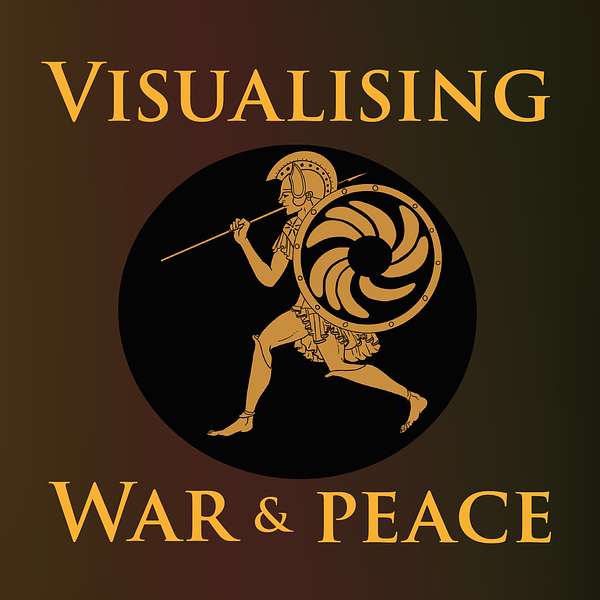
Visualising War and Peace
How do war stories work? And what do they do to us? Join University of St Andrews historian Alice König and colleagues as they explore how war and peace get presented in art, text, film and music. With the help of expert guests, they unpick conflict stories from all sorts of different periods and places. And they ask how the tales we tell and the pictures we paint of peace and war influence us as individuals and shape the societies we live in.
Visualising War and Peace
The Ungrateful Refugee with Dina Nayeri
This episode is part of a mini series exploring forced displacement as one of the many legacies of conflict. Alice interviews Dina Nayeri, an author and lecturer in creative writing at the University of St Andrews. Dina spent her early years in Isfahan in Iran, before fleeing with her mother and brother, after her mother was arrested for converting to Christianity. They ended up settling in the US, and Dina read Economics at Princeton, before embarking on a career as writer, publishing award-winning fiction and non-fiction.
Much of her writing draws on her experiences as a refugee and reflects on many different aspects of displacement. Her first novel, A Teaspoon of Earth and Sea, tells the story of an Iranian girl and her family who experience separation and political oppression in post-Revolutionary Iran, and it conjures a rich imaginative space for exploring what it can be like not to flee, but always to dream of an alternative life in a different country and culture. Her second novel Refuge also revolves around the story of a young Iranian girl, who escapes to America as a child but leaves her father behind; and Dina takes the opportunity here to explore concepts of home and belonging as well as movement and separation, as experienced across many years.
Turning to non-fiction, Dina’s multi-award-winning book The Ungrateful Refugee: What Immigrants Never Tell You weaves her own story together with a host of other real-life refugee stories, and asks important questions about the demands that people and governments make of refugees, while shining new light on what refugees themselves experience. Dina scrutinises attitudes to refugees and asylum-seekers further in her latest book, Who Gets Believed?, which explores practices of truth-telling alongside cultures of disbelief, and underlines what inequalities persist and are enacted when we are selective (and prejudiced) about who we believe.
Dina has also collaborated with photographer Anna Bosch Miralpeix to write The Waiting Place, a book which documents the struggles and dreams of ten young refugees from Iran and Afghanistan in a refugee camp in Greece. Inspired by her own understanding of what waiting in a refugee camp can be like, and also by her childhood experiences of racism and bullying in the school setting as a newly-arrived refugee, Dina uses this book as a basis for schools workshops across Scotland and beyond, teaching the importance of empathy and compassion.
In discussing each of Dina's books, the podcast touches on a range of important issues, from what refugees experience, over many decades, to what host communities often expect or demand of them. We also reflect on role that storytelling habits can play in shaping how we receive and respond to stories of forced migration, and Dina reminds us how culturally diverse those habits can be - and how important is it to be open to other people's storytelling traditions.
We hope you enjoy the episode. To find out more about our wider project on Visualising Forced Migration, please visit our website. If you have any questions or want to contribute to our ongoing discussions, please do get in touch. You can follow us on social media or contact us directly by emailing us at viswar@st-andrews.ac.uk.
Our theme music was composed by Jonathan Young.
The show was mixed by Zofia Guertin.